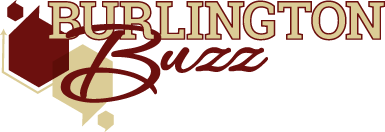Burlington High School Building Project: What is the Center for Education?
What programs are housed in what would become the Center for Education, and would it be more cost-effective to move those programs elsewhere?

The final plan for the proposed addition-renovation project at Burlington High School – a plan whose funding was approved by Town Meeting in September pending a town-wide debt exclusion vote, which is happening on November 15 – includes a "Center for Education," which will house some functions and offices that aren't strictly a part of the high school education program. What are these functions, and why include them in the plan?
What programs are included in the Center for Education?
Prior to 2025, the part of the Burlington High School building that will become the Center for Education housed major programs including:
- Burlington Early Childhood Center, the town's integrated preschool
- Burlington Science Center
- Burlington Cable Access Television (BCAT)
- Burlington Public Schools Central Office
- LABBB Collaborative, a program serving students with complex learning needs throughout the towns of Lexington, Arlington, Bedford, Belmont, and Burlington
While the LABBB Collaborative has relocated its offices, the rest of the programming is expected to remain in the renovated two-story Center for Education. Also to have space:
- The Burlington DevilBotz robotics team
- Area123, which supports the BHS drone and esports teams
- The Simon Youth Academy alternative high school program
- The Innovation Pathways Program, which supports students in exploring professional opportunities under the mentorship of industry sponsors
- Curriculum, special education, storage and IT support for the district
What's the rationale for keeping non-high-school programs at the high school campus?
Early on, the building committee made the commitment to keep this "non-high school space" in the project. While they're not classroom space, said Building Committee Chair Katherine Bond at a community meeting in May, these spaces form an integral part of the students' learning experiences at the high school and help them develop skills they might not otherwise have access to.
Burlington High School students benefit from internships, workshops, and classes involving the Burlington Early Childhood Center, BCAT, Innovation Pathways, and the Science Center, many of which happen during the school day. These are long-standing programs; they and the district functions that are performed by the central office would need to be housed somewhere if not at the BHS facility.
Could the non-high-school programs be moved off-site?
Office space is available in town as businesses downsize their physical footprint, and it has been suggested that the town should purchase some of this commercial space for $250-300 per square foot and move the non-high-school programming there. However, this space won't immediately be able to serve the functions of these programs; renovations, according to BHS building project Owner's Project Manager Terry Hartford, would cost $350-425 per square foot, bringing the project in line with the $703 per square foot number quoted (and approved by Town Meeting) for the Center for Education.
Additionally, if these programs are moved, access to and usefulness of these opportunities will be limited for students who would otherwise benefit from the internships and courses offered by them. For the programs to continue, either the district would need to provide transportation or students would need to make their own way there – either way, travel time would take up time they could be engaged in their work.
The proposed Center for Education remains a central feature of the Burlington High School project; the decision on whether to move forward with the plan as proposed will ultimately rest with Burlington voters. The town-wide debt exclusion vote is scheduled for November 15, and early voting is already underway.
More information and background about the BHS Building Project





